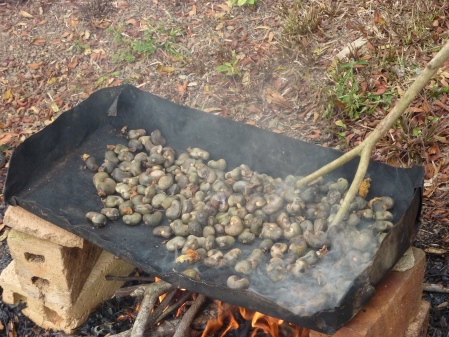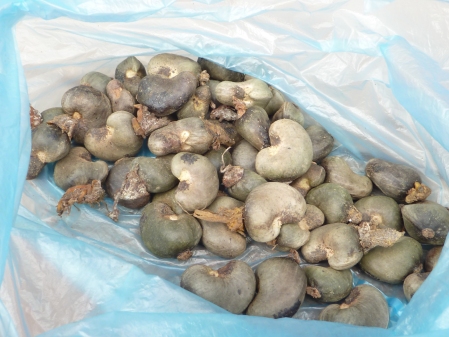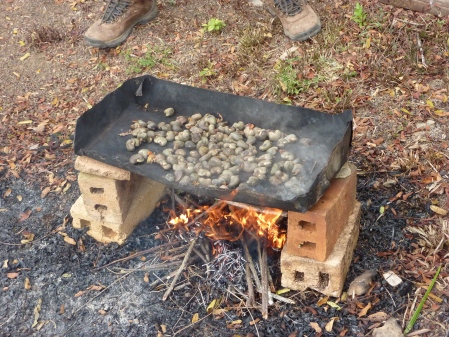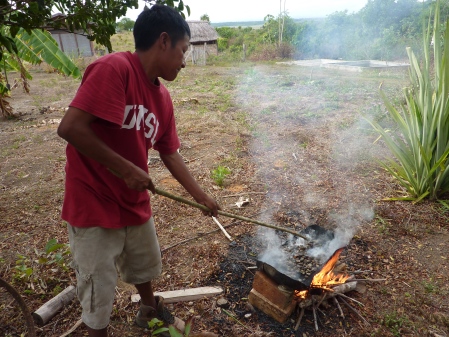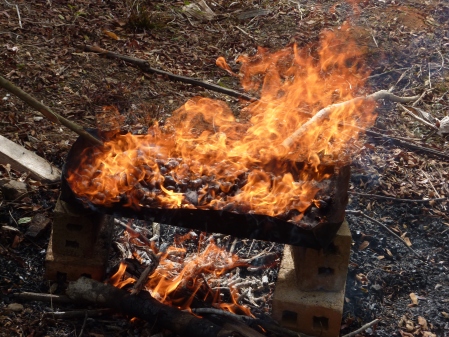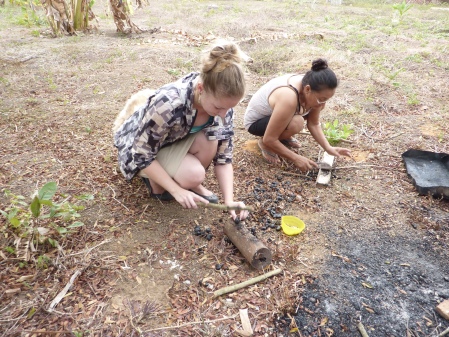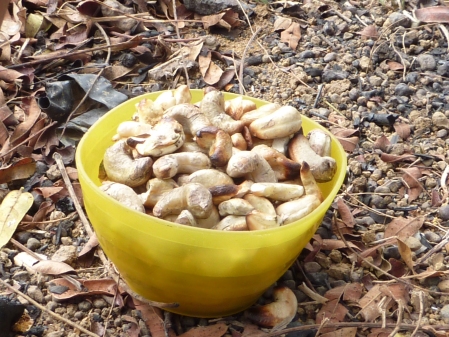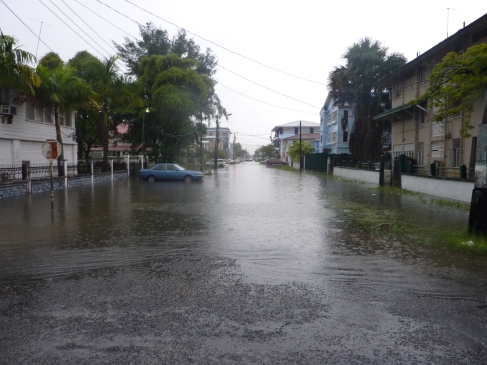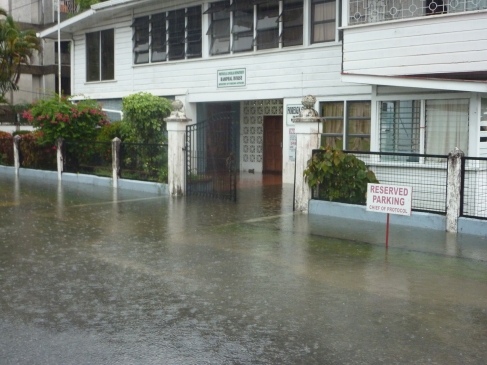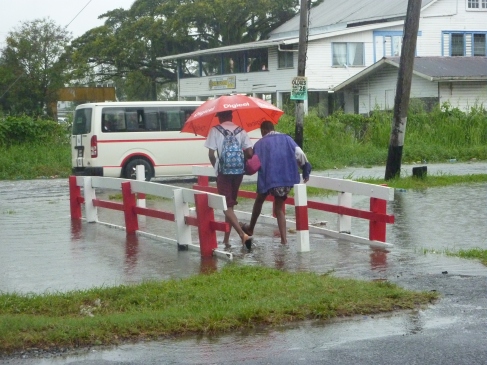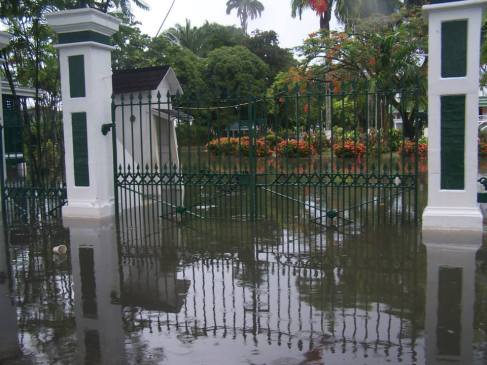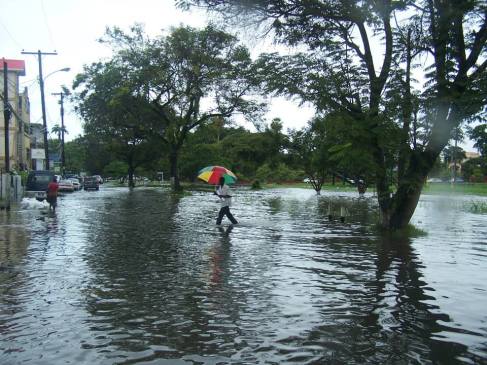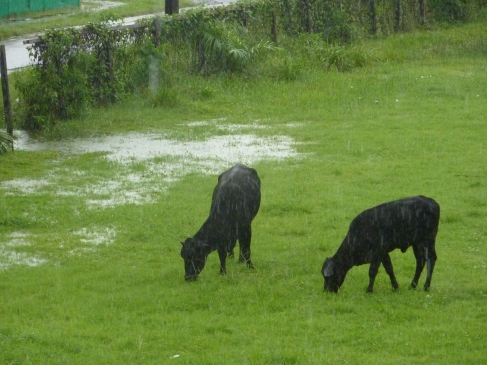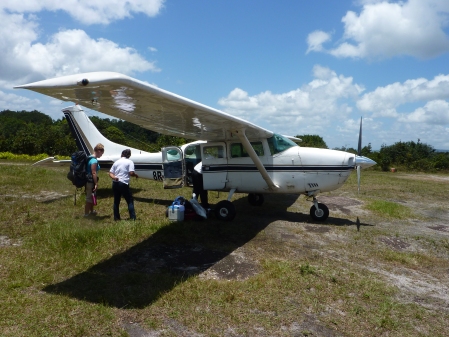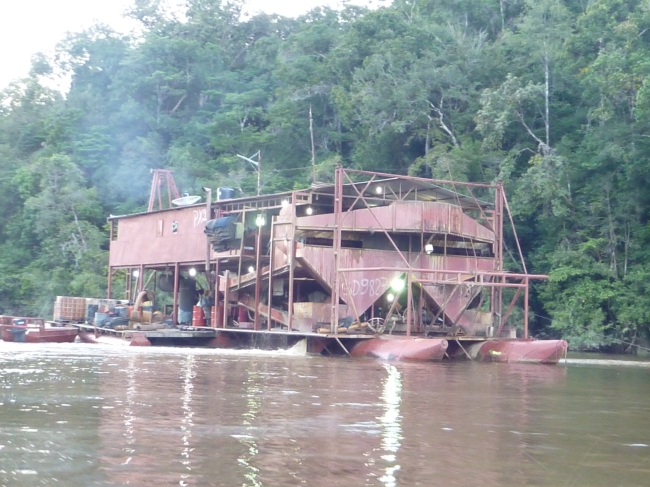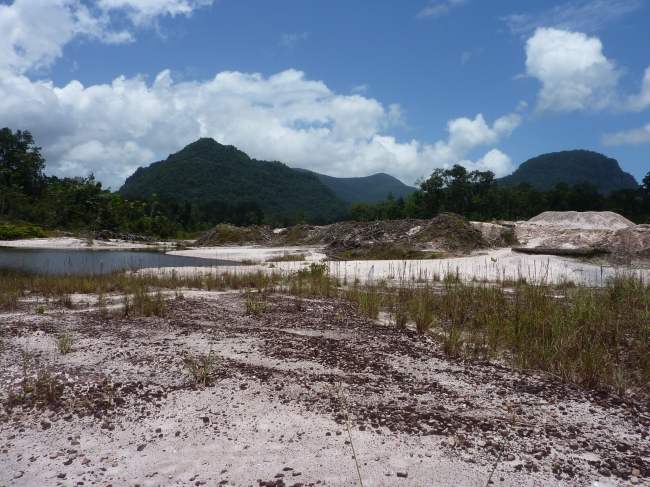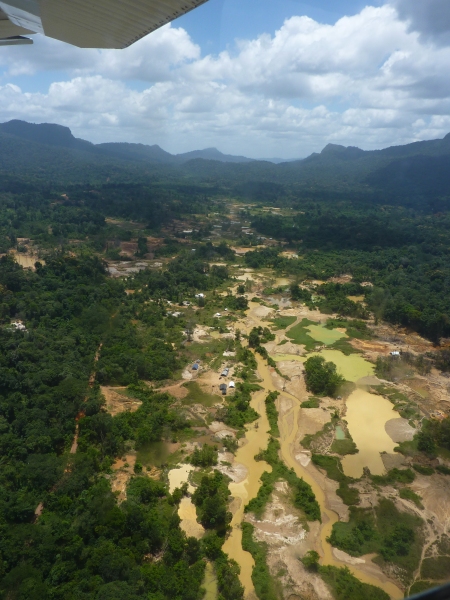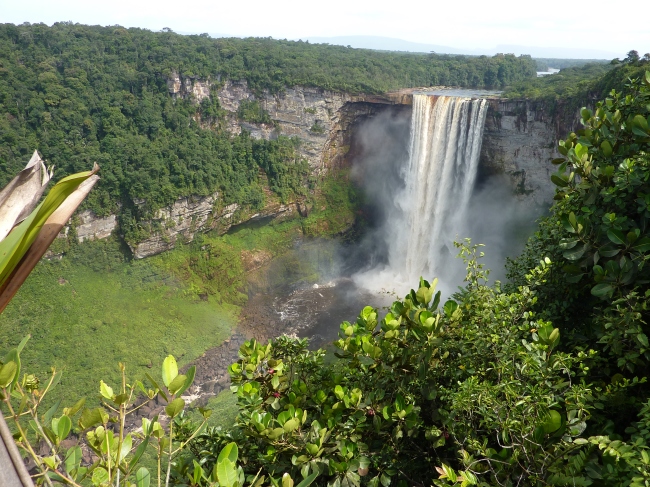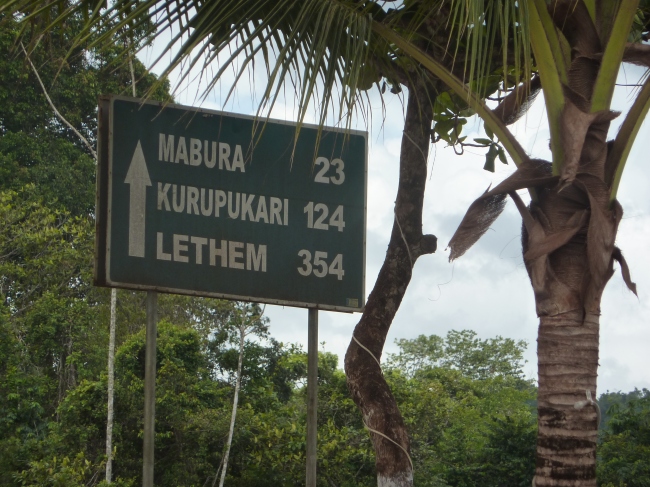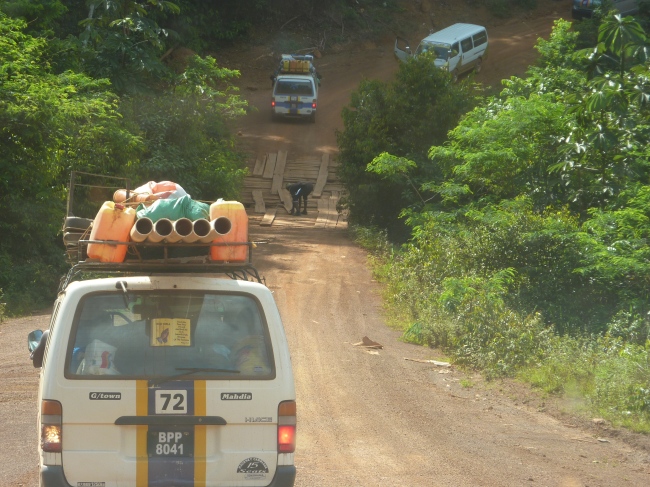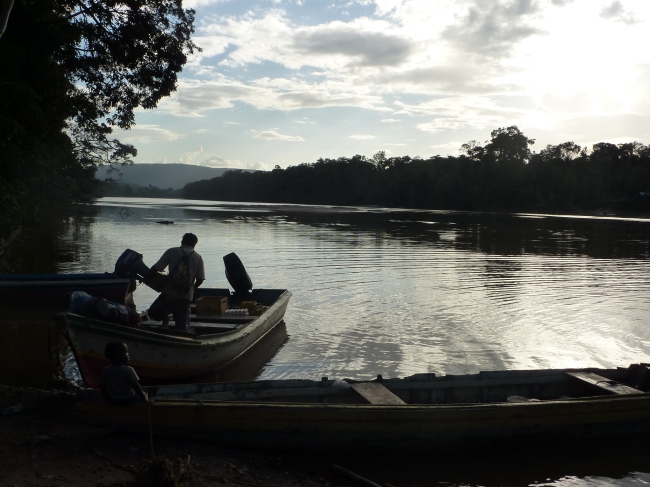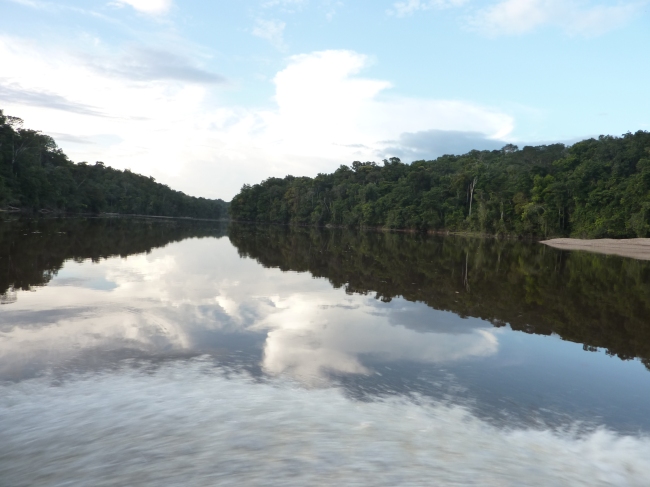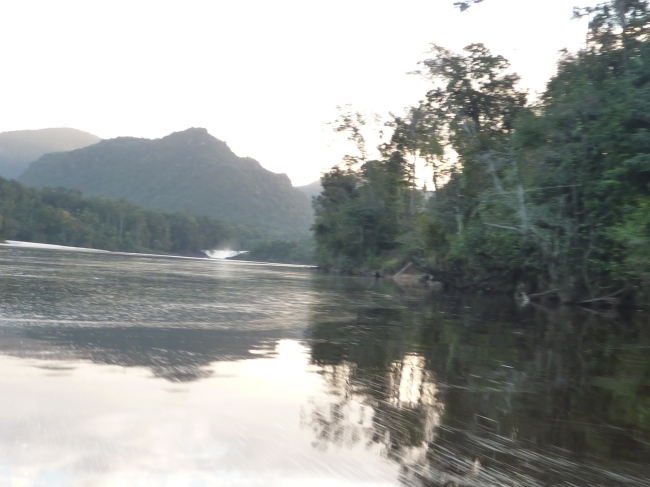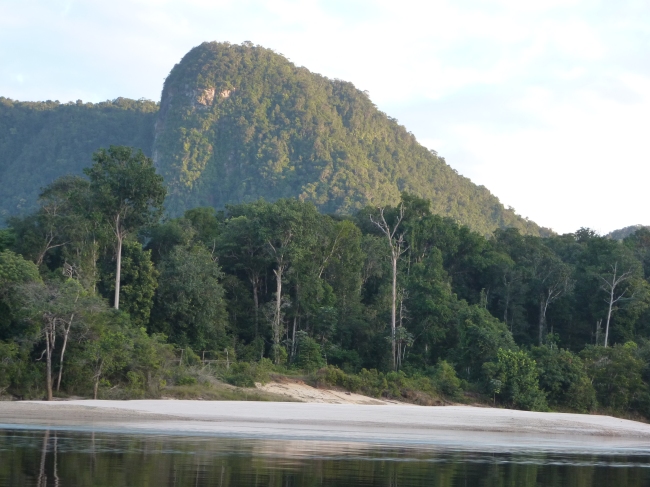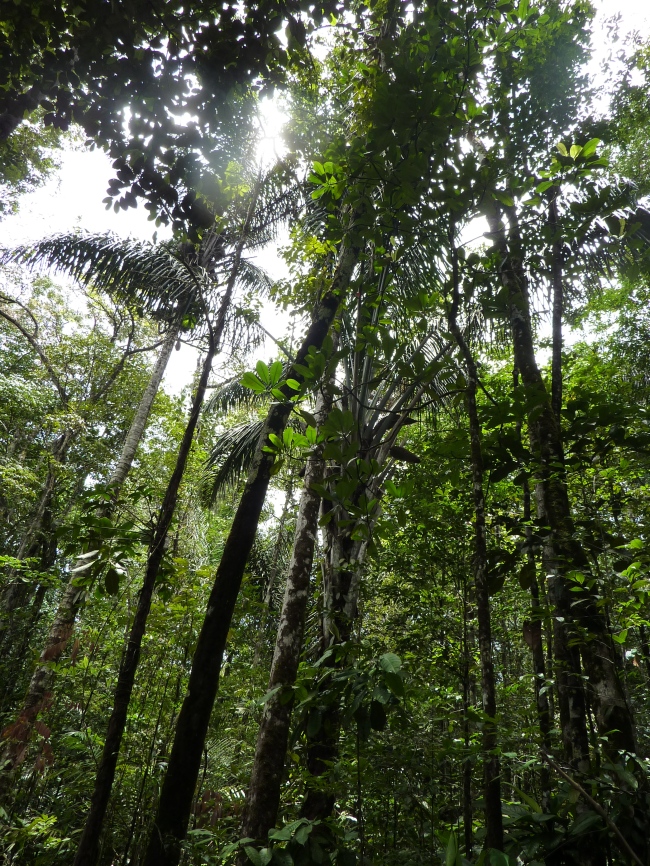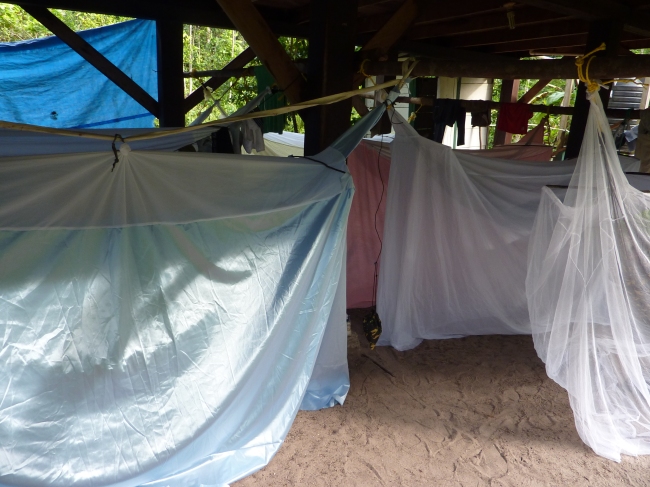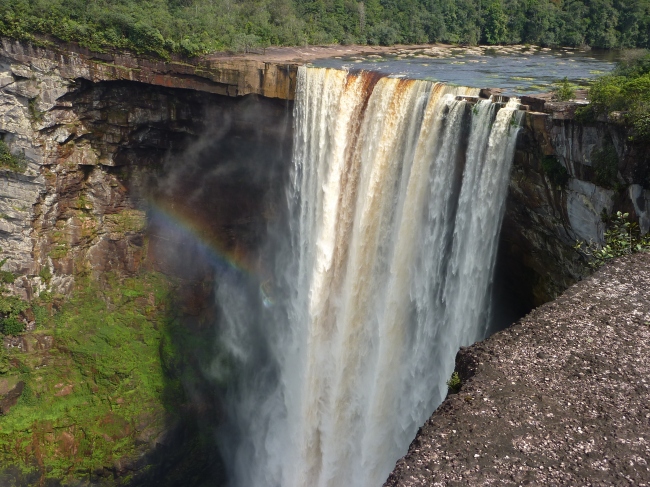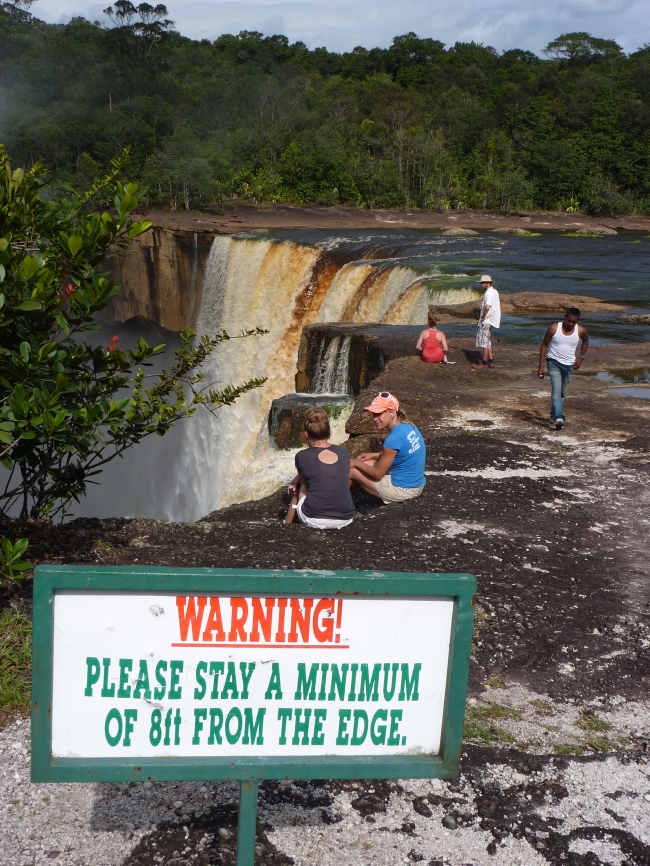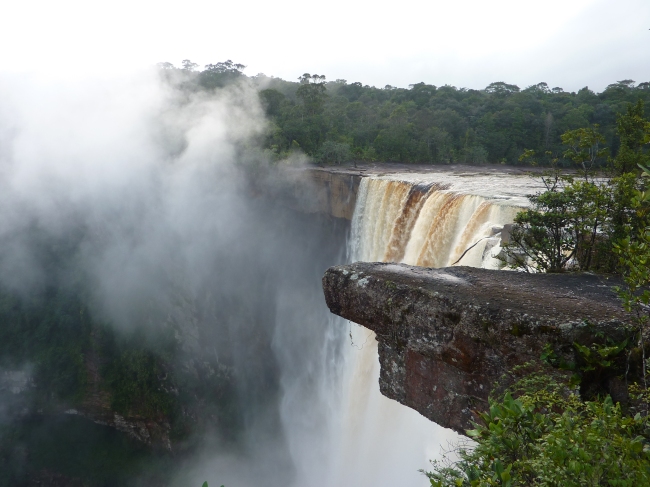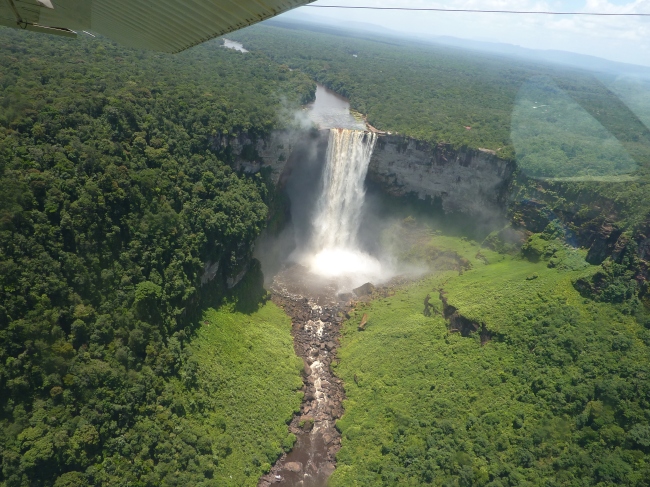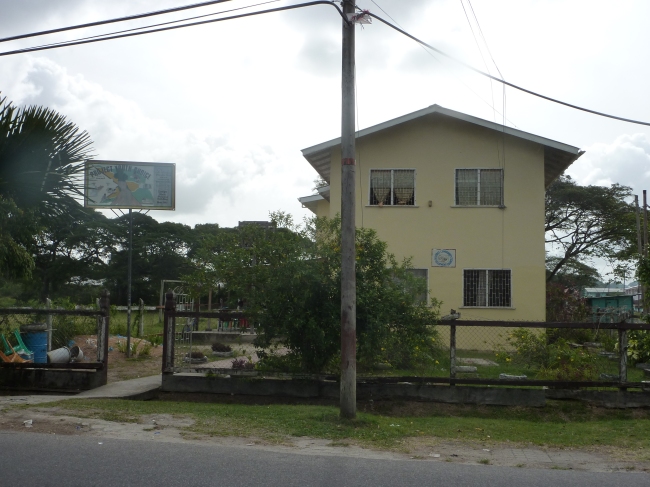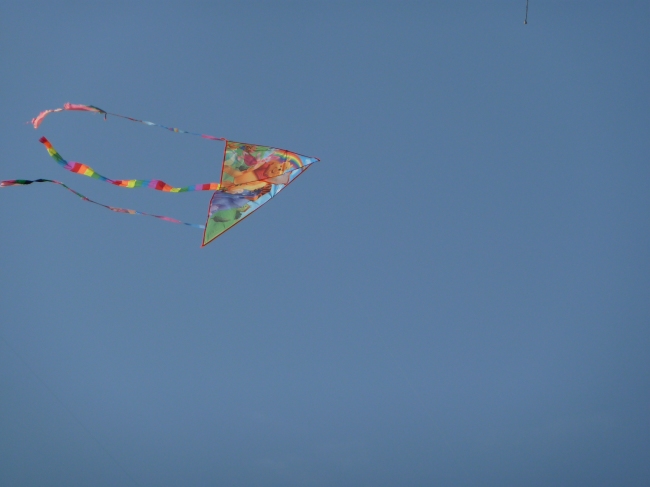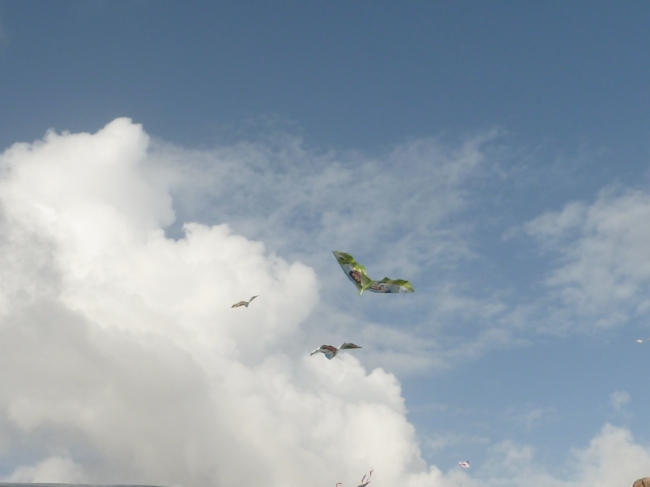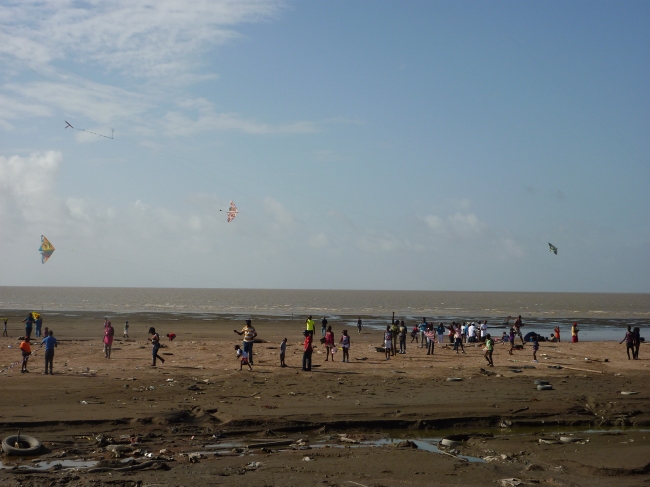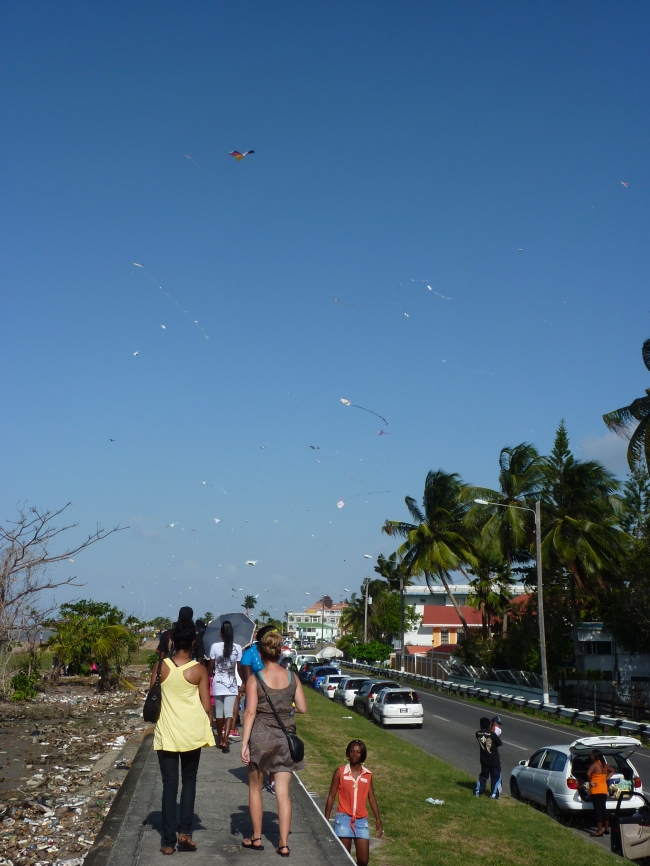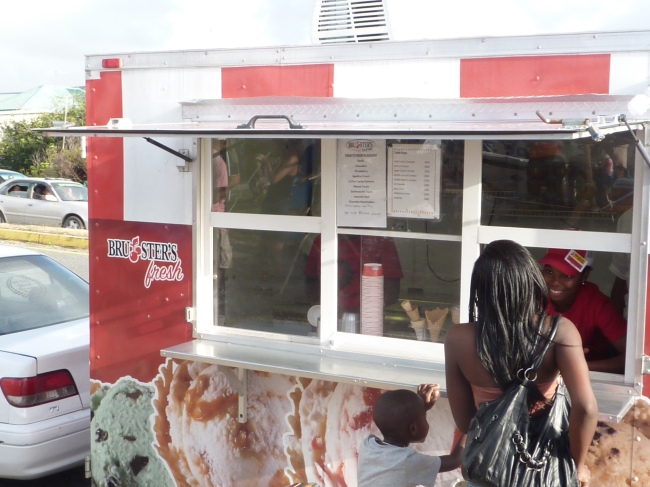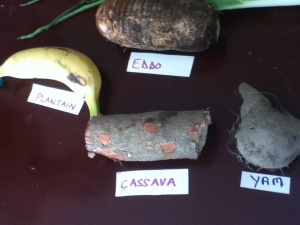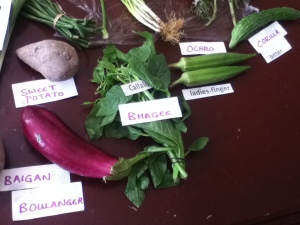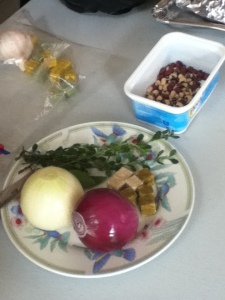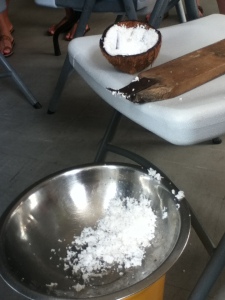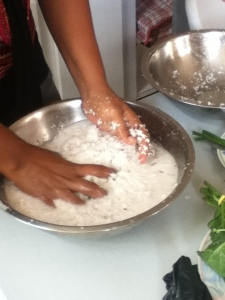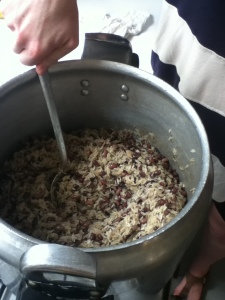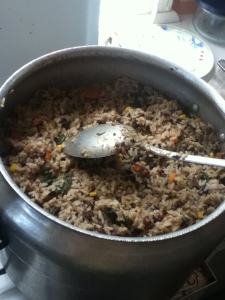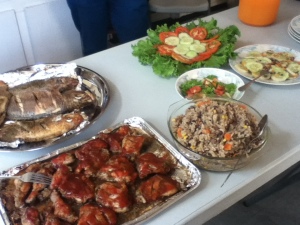Think I have the lyrics wrong? Not in Guyana! It just so happens that December (and Christmas) is cashew season, and during my recent trip to the Rupununi (more pictures and information on my trip later), I was fortunate to be taught the elusive process of cashew roasting, the hobby of many village children this time of year.
I didn’t know until I arrived in Guyana, but the cashew tree produces both a fruit and a nut. In the following picture you can see the unripe cashew nut and the strange shape above it will eventually develop into a pear-shaped, pinkish cashew fruit.
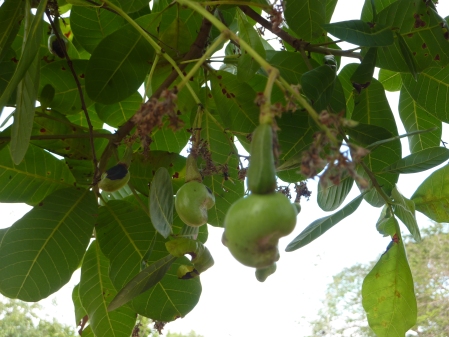
Here’s how it begins: You find the ripe cashew nuts, a roasting tray, and some convenient bricks and branches to build a fire.
The cashew nut has an outer shell, then a layer of oil that surrounds the actual nut. By roasting the outer shell, the oil (which is actually poisonous, don’t eat it raw!) is heated to cook the nut inside. As the outer shell cracks, it will release the oil which will catch on fire and burn away.
Sometimes you need to help it along by tossing a burning branch into the tray once the nuts are roasted.
Put out the fire with some sand, or by tossing the tray onto the ground and using dirt. As I was told, this is the one food that you must eat off the ground!
Then you remove the outer shell by hitting it with a piece of wood to crack it open and reveal the nut inside. This is much more difficult than it sounds! My cashews were warm and delicious, but kept breaking apart before I could get them out of the shell. Luckily, I had some expert help…
Beware, however, of the side effects of roasting cashews – blackened fingers and a few days of your skin peeling away due to the oil residue.
And the finished product! Roasted cashew nuts that I could snack on during the trip back to Georgetown.
Merry Christmas!

